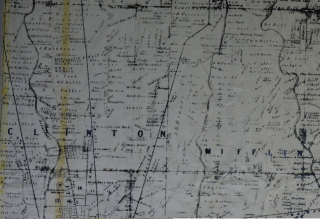A History of Clinton Township

A History of Clinton Township
In 1797, the United States Government established guidelines and appropriated money for the United States Military District, one of the original land surveys of the Northwest Territory. The survey of the boundaries of the district was started that year and was completed by March of 1799. In addition to what would become Franklin County, Tuscarawas, Guernsey, Muskingum, Licking, Coshocton, Holmes, Knox, and Delaware Counties were also part of the U.S. Military district that was laid out in five-mile square townships.
According to the Franklin County Engineer’s Office, the four lines of Clinton Township were surveyed at various times during the year 1797.
- Clinton Township was originally part of Liberty Township
- Liberty Township was created when Franklin became a county in 1803.
- Clinton Township was created by the County commissioners on July 1st, 1811.
- Clinton Township included the west half of Mifflin Township.
- On September 2nd, 1811, Mifflin Township was created, and the east part of Clinton Township was given to them; this set the boundaries of Clinton Township as it is today.
- Before Clinton was a township, the north half of Clinton Township was part of Sharon Township and the south half was part of Montgomery Township.1,2
According to a 1909 History of Franklin County by William Alexander Taylor, some of first people to settle Clinton Township were the families of Hugh and Robert Fulton, John Hunter, Samuel Elvaire, John Lisle, the Hendersons, the Hesses and the Beers.
Taylor writes, “Roswell Wilcox came into the township in 1814 and erected what for a period of many years were known as the Wilcox Mills; later they passed into the possession of the father of John James Piatt, the poet, and still later passed into the possession of the Messrs. Hess.
These mills and other along the Olentangy River, as well as large distilleries and other businesses, gave rise to the communities of Clintonville and Worthington along the plank road that would become U.S. 23 into Columbus.
Taylor also recorded, “There were in the township in 1840 a population of nine hundred and sixty-nine. In 1850 the population reached one thousand one hundred and eighty-six, and in 1858 one thousand two hundred and ninety. The Census of 1900 gave the population of four thousand three hundred and eighty-five, and the present population is conservatively placed at four thousand seven hundred and fifty. This is the first township in the order of their organization to maintain a steady and uninterrupted growth.”5
In 1871, four brothers started a small circus which opened at the corner of State and High Streets. In less than a decade, the Sells Brothers Circus was one of the most popular shows in the country. They built their winter quarters in Sellsville, where the University View neighborhood and Lennox Town Center are today. Watch more about the Sells Brother's Circus Here.
In 1930, another resident Opha Moore recorded his experience and memories of Clinton Township saying of what is now Cleveland Ave.,” It has been only a few years since the Innis farm was cut up into lots and placed in that form on the market, recognized as the Harbor Road of the earlier days. Harbor Road was so called because many years ago it was the midst of a small wilderness which gave harbor to criminals trying to escape from the law. In the vicinity of what are now Fifth and Cleveland Avenues, extensive brick kilns were located and the rough element collected there, being largely recruited by French Canadians, many of whom were fugitives from their own country, made it a place to be avoided unless the traveler attended to his own business and kept strictly on his way. It retained this character only a few years, however, and is now the center of an industrious and prosperous population.”3
Throughout the 19th and early 20th Centuries, Clinton Township spanned a huge portion of Franklin County, including the campus of The Ohio State University. After a series of annexation throughout the 1950s and 1960s, Clinton Township’s borders are what you see today. 4
For a more modern take on Why Clinton Township wasn't fully annexed into the City of Columbus, check out this video from WOSU
Sources:
Blazes, Posts, & Stones: A History of Ohio’s Original Land Subdivisions by James L. Williams, P.S. 1
Research by the Franklin County Engineer’s Office, www.franklincountyengineer.org 2
History of Clinton Township, Franklin County OH (rays-place.com) 3
Curious Cbus: Why Was Clinton Township Never Fully Annexed Into The City? | WOSU Public Media4
Franklin County Genealogical & Historical Society - Township Histories (fcghs-oh.org) 5

